
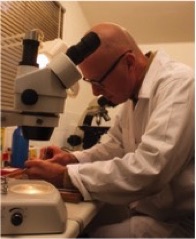
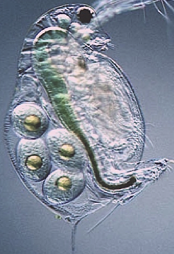
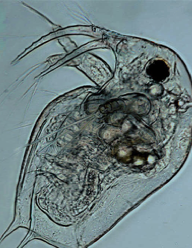
Our aquatic section is focused upon the fundamentals of aquatic ecology from aquatic monitoring of algae and zooplankton to macro invertebrates and macrophytes. Our laboratory facilities and associate laboratory technicians provide identification of species and species and cell count services from our dedicated laboratory. We have the capacity to handle larger contracts but retain the flexibility to service even the smallest projects. Our staff are client focused and have a broad biological skill base underpinned with deep ecological understanding and a desire for quality. Some staff have MRSB status and all our committed biologists.
We are able to offer the following biological analytic services in aquatic ecology:
Zooplankton
Zooplankton, sometimes known as 'water fleas' are a fundamental component of freshwater ecosystems. They are responsible for exerting grazing pressure on the algal community of the waterbody, the concomitant affects of which are contributing to controlling turbidity and maintaining water clarity which in turn benefits macrophyte growth and creates habitat diversity for invertebrates and fish. We undertake species identification and population density counts. We also carry out diversity index analytics where requested or appropriate.
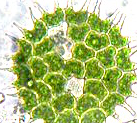
Invertebrate sampling
The invertebrate community forms an important element of aquatic ecosystems. Invertebrates are consumers and detritivores, predators and prey. Water quality can be assessed by their presence, using species composition and density within a waterbody and applied to metrics such as BMWP or ASPT. They are a useful predictor of fish activity and the composition of the fish assemblage.
Phytoplankton (algae)
Algal populations (present within all waterbodies) form an essential fundamental component of the aquatic ecosystem, consuming nutrients in the waterbody, and in turn providing food for zooplankton. Left unchecked, they can create poor water clarity and can deleteriously effect macrophyte growth, leading to loss in aquatic diversity. The laboratory carries out species identification as well as density cell counts. We undertake commissions from both fresh water and estuarine environments.
Macro Invertebrate sampling
This covers the larger invertebrates and includes all species of crayfish. We are NE licensed native white clawed crayfish surveyors. We provide suitable survey and reporting services to those who's work may impact upon this habitat. We provide control of non native crayfish and help contain spread of non natives through surveying and trapping, first class biological control practices and sound advice. Our staff are fully trained in biosecurity and non native species control, all having completed the Invasive Non Native Species Secretariat modules.
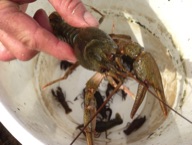
Temperature monitoring
Using data loggers to monitor water temperatures at a scale from every minute (in cases of discharge effects during events) through to every 6 hours over several years to detect seasonal and temporal changes and how they affect aquatic communities. We deploy temperature data loggers throughout all aquatic ecosystems.
Turbidity
Measures of turbidity (through relative light level) monitoring is frequently carried out via deployment of remote data logger, often from from several months to years. Turbidity is caused by algal population growth, re-suspension of sediments in shallow systems created by fetch, or anthropogenic activities such as dredging. Aquatic activity also causes turbidity such as benthivourous fish feeding. Effects of increased turbidity include reduce light levels and reduce macrophyte growth with numerous knock-on effects.
Dissolved oxygen
Assessment of DO is important where there are suspected pollutants and/or activities that may reduce availability of oxygen. For instance, during weed cutting activities, the resultant biological oxygen demand can cause DO levels to rapidly fall causing distress and potential mortality to fish. We undertake active monitoring of DO levels in all aquatic systems
Water quality
We measures and assess water quality parameters - see also using invertebrates as indicators of biological quality (see invert sampling).
Invertebrate assemblage composition can be used as an indicator of pollution, particularly chronic pollution events. Invertebrates are also an important food source for most fish species. Many terrestrial invertebrates start out life under the water, before completing their life cycle above the surface.
Our laboratory undertakes species identification and density estimates and employs a variety of suitable industry standard metrics such as BMWP and ASPT scores etc for inclusion into reports, depending upon the clients requirements.